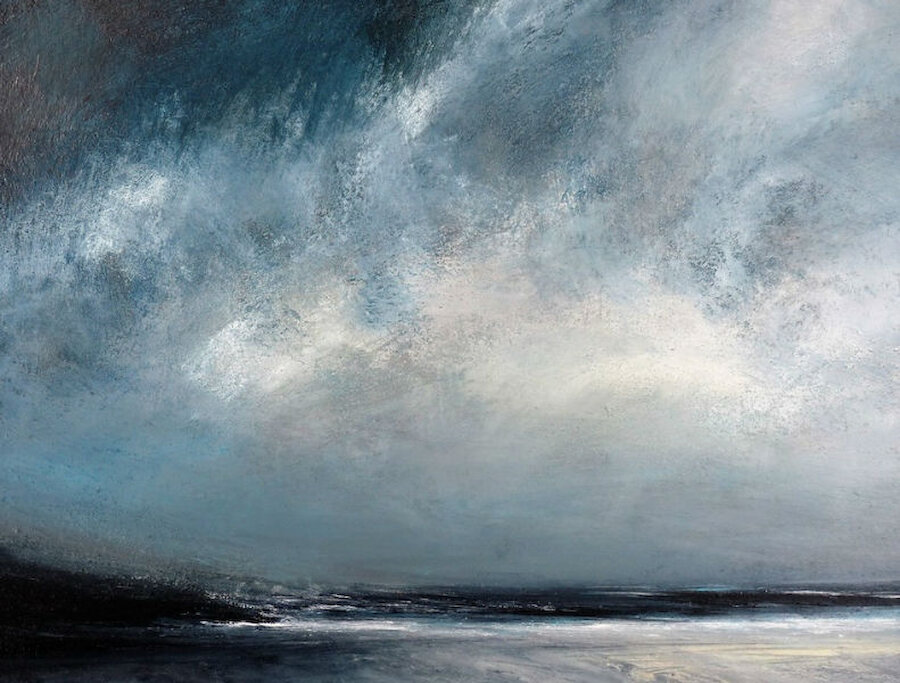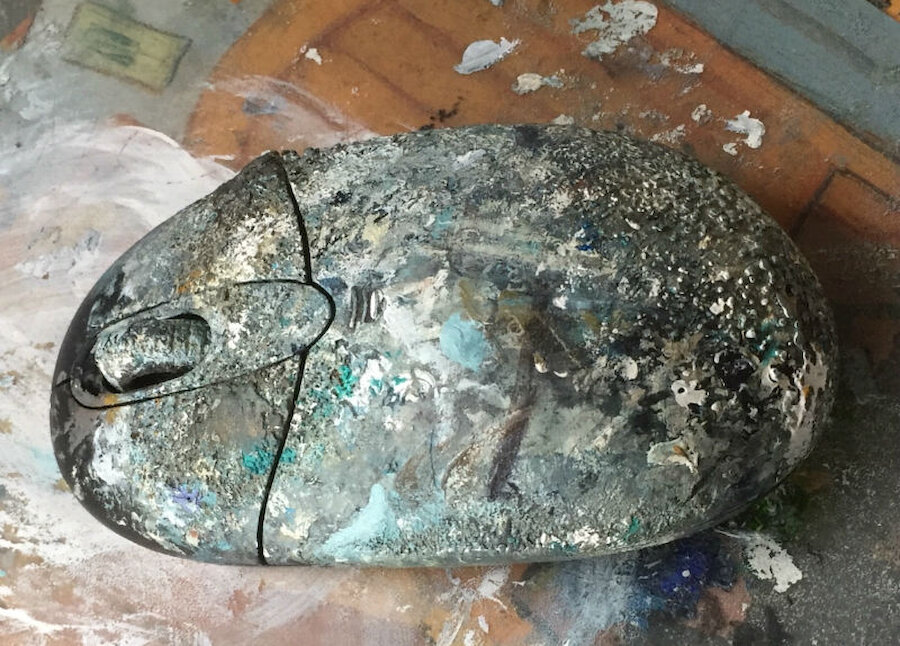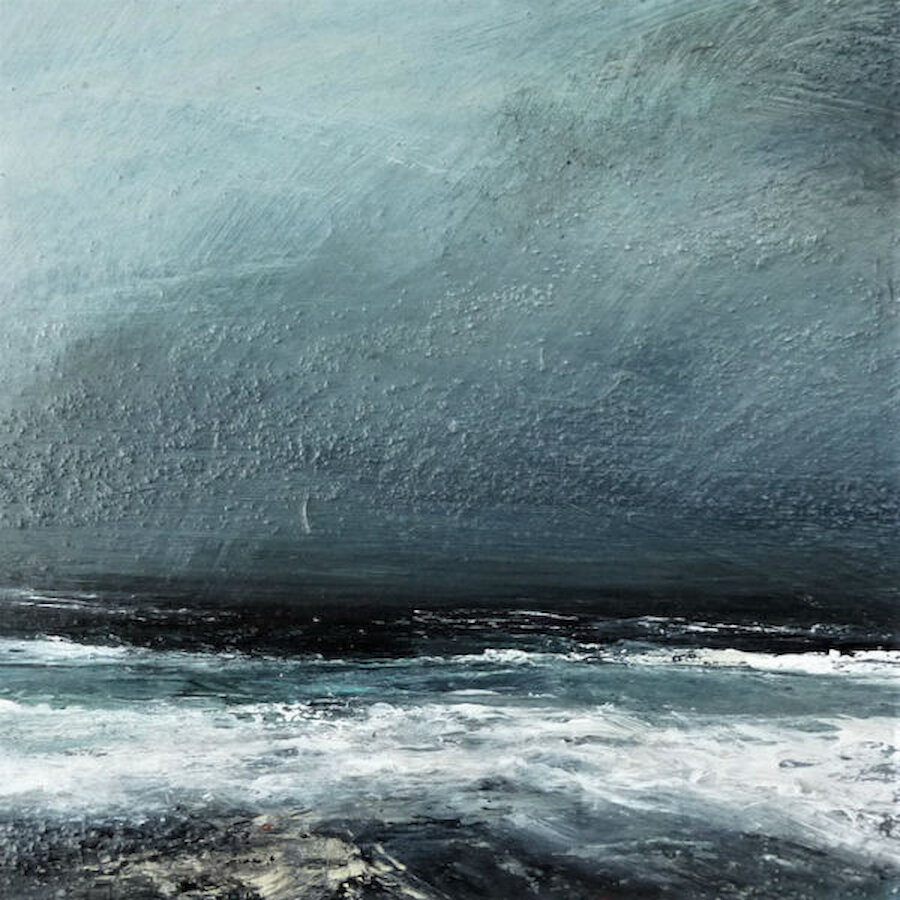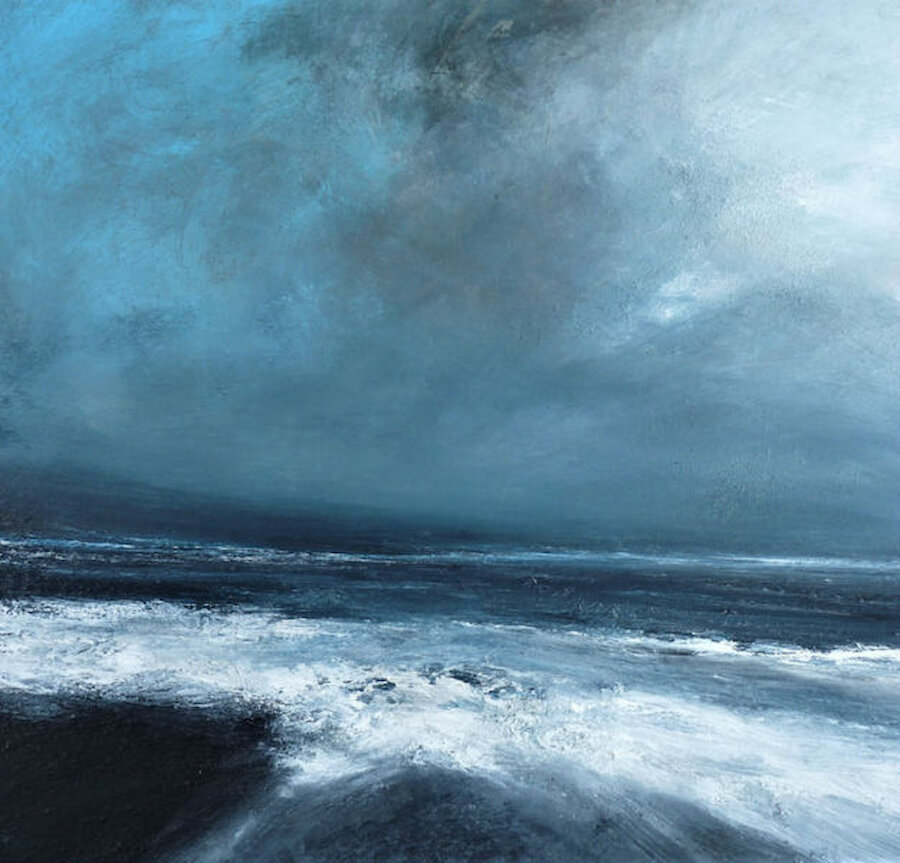Ruth Brownlee is one of the best-known of the many artists practising in Shetland. Her much-loved seascapes can be seen in homes in and beyond the islands. Ruth’s solo shows have delighted gallery visitors in Aberdeen, Edinburgh, East Lothian, Glasgow, Harrogate and London, among other places. She has participated in group shows too, in locations as diverse as Wigtown, Crieff, Much Wenlock and Bergen.
Ruth was born near Edinburgh in 1972 and she studied drawing, painting and tapestry at Edinburgh College of Art, graduating in 1994. She has worked and studied in the USA, Norway, France and Cyprus. She particularly enjoyed a print-making residency at The Center for Contemporary Printmaking, a studio and gallery in Norwalk, Connecticut. “I’d like to have had longer – I only had two weeks. I felt I was just getting into it by the time I had to leave.”








